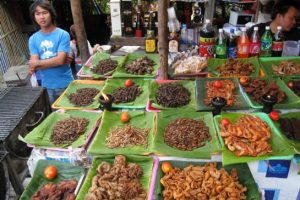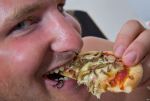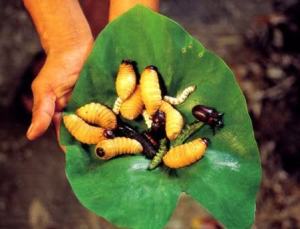My guest today is Dr. John C. Abbott, Director of the Wild Basin Creative Research Center (http://think.stedwards.edu/wildbasin/) in Austin, Texas, a part of St. Edward’s University.
Thank you for being with us today, John. Tell us a little bit about Wild Basin. The Wild Basin Creative Research Center serves as an extension of the St. Edward’s University main campus and includes 227 acres within the Balcones Canyonlands Preserve system. The preserve is open to the public for trail hiking and events. Wild Basin also offers volunteer opportunities and guided school tours.The Wild Basin Creative Research Center is an educational resource that provides extensive learning opportunities for students and the general public.
I understand you study dragonflies and damselflies. How did you get interested in insects? I have been interested in insects since I was a little kid. They have always fascinated me, I think largely because of their amazing diversity in numbers, form and behavior. I didn’t, however, develop a particular interest in dragonflies and damselflies until I was an undergrad in college. I was helping a graduate student in the lab I worked in, when he pointed a dragonfly out to me and said, no one is really working on this group, you should….the rest is history.
I heard you say something about eating insects. Are you kidding? Not at all. The US and Western Europe are among the few cultures that don’t regularly eat insects. This isn’t because other countries are poor and they have no choice, it is because it makes sense, both nutritionally and efficiently to raise, harvest, and eat insects. They contain large amounts of protein and other nutritionally beneficial vitamins and minerals we need. They are abundant; there are more insects on the planet than any other group of animals (some 1 million species currently known). In fact, they are so numerous that they are impossible to keep out of our food supply, even if we wanted. I call this FDA sanctioned entomophagy, which is the practice of eating insects. The government allows a certain amount of insects (or insect parts) in all our foods because you simply can’t keep them out. If you have ever eaten peanut butter, salads, or fig newtons, you have eaten insects.Most cultures around the world actively practice entomophagy (or eating insects). In most Asian markets, you will find numerous types of insects available. In Mexico they have a stink bug festival where not only do they eat stink bugs, but they also crown a Ms. Stink Bug!
Why would anybody want to eat bugs? Insects are plentiful, easily raised or harvested, and nutritionally beneficial.
They are also a sustainable food resource. So it is a simple matter of economics, for your pocketbook and the planet. Raising insects is much cheaper and has much less of an impact on the planet than see raising cattle. An economist at the University of Wisconsin, David Madison, once calculated that 1 person could collect 18.5 lbs. of Mormon crickets in a single hour. This many crickets contain 23,500 calories or the same as 87 chili dogs, 49 slices of pizza, or 43 big macs….think of how much effort has to go into producing those foods vs. just one hour collecting insects. Companies are ultimately concerned with their bottom dollar recognize this. One common example of an insect that is regularly used in our American food supplies is the cochineal. It is a type of scale insect that you can find on prickly pear cacti in the south. They actually raise them on cacti in large greenhouses in Mexico. They produce a deep red pigment that is better than artificial pigments for food coloring. So, many bright red foods (Ruby Red Grapefruit Juice, Gummy Bears, Mentos, Maraschino Cherries, etc…) get their red color from these insects. Companies list it write on the ingredients label.
Can you share any good recipes with us? The typical insect has a nutty taste to it, but in general they will pick up the flavor of whatever you cook them with or the spices that you use. So, we (well, really my wife, she is the cook in the family) often make desert items with insects when we are introducing the idea to others, because who doesn’t like sweets! You can also make some nutritionally healthy flour from insects, by drying them and then grinding them up. Some of my favorite items are Chocolate Chirp Cookies and Waxworm Fritters. There are actually a number of cookbooks out there focused on insect recipes (http://tinyurl.com/op4d2th). There is even a newsletter (http://www.foodinsectsnewsletter.org/)!
Are all insects edible? What should the novice insect gourmet look for? No, some insects are not edible because
they are toxic, or simply so small or hard to collect it wouldn’t make sense to harvest them as food. One source lists some 1400+ insects (out of the 1 million currently known) that are regularly eaten around the world. The big groups are ants, bees, and wasps, beetles, butterflies, and finally grasshoppers, roaches and crickets. It is the softer-bodied immatures of most of these insects that are used for food. They are more easily digested and easier to collect, so we are talking about eating caterpillars or beetle grubs, not an adult butterfly or big, hard beetle. You want to look for easily collected or obtained insects to use in food. Many insects are easily raised in large numbers. A good place to start is with mealworms (beetle larvae) that can be easily obtained from your local pet store.
Where can I try some? In the US, most edible insects are sold as novelty items. A company by the name of HotLix makes lollipops with crickets, mealworms and scorpions for example. You can often find these in novelty stores, but they are also available online. You might try local grocery stores catering to specific ethnic groups (Asian markets, Fiesta, etc…). Little Herds (http://littleherds.org/) is a local nonprofit that just got started. They are actively promoting insects as a sustainable food resource and have events where you can try eating insects. If you want to try cooking your own insects, you should make sure the insects have not been exposed to any pesticides. In other words, it isn’t wise to collect insects locally, especially in urban environments, because of all the insecticides that are used. There are several companies however, that raise insects specifically to be used as a food source for pet reptiles and amphibians. You can purchase insects from them, knowing they have not been exposed to insecticides and then cook them for use in your own recipes.
Many thanks, John. I learned a lot. Time for some crunchy cricket chips!






